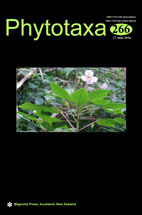Abstract
Psoralea palaestina is a critical and unappreciated species described from Palestinian territories, and currently treated as synonym of P. bituminosa, nowadays known as Bituminaria bituminosa. Nomenclatural investigations allowed to ascertain that it was validly described for the first time by Bassi (1768) and not by Gouan (1773), as previously thought. Extensive taxonomic investigations revealed that this very peculiar legume is morphologically well differentiated from the other allied known species. Therefore, it has to be properly treated at specific level and transferred to the genus Bituminaria, thus proposing a new combination: Bituminaria palaestina. Based on literature, herbarium and field data, this species occurs in some localities of the Middle East (e.g. Israel, Jordan and Lebanon) where it mainly grows in damp habitats (i.e. swamps, rivers, etc.), differing from other known species of Bituminaria for its ecological requirements. Diagnostic features, micro-morphology of pod and seed testa, pollen grains, ecology, conservation status, and chorology of this species are examined. Its chromosome number is reported. Furthermore, its relationships with the currently recognized species belonging to Bituminaria are considered, and an analytical key including all the species of this genus is provided.

